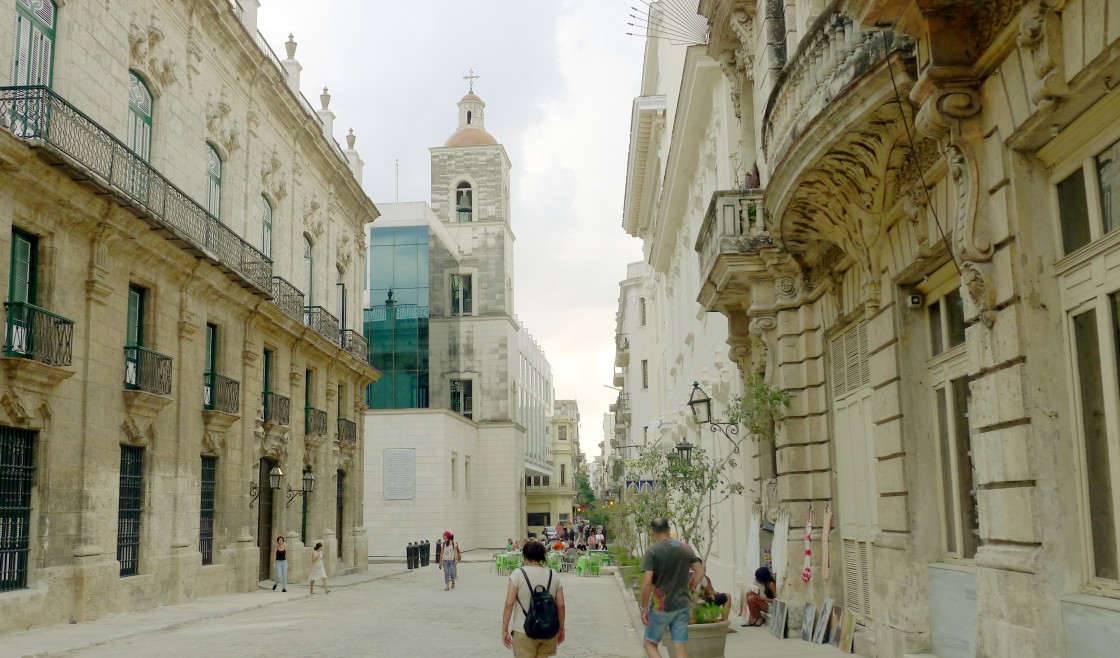Havana Part 2: Conference Report

As a follow up to her Cuba trip to present at the VIII Latin American Colloquium on the Industrial Heritage, architect Kett Murphy published the following conference report in The International Committee for the Conservation of the Industrial Heritage (TICCIH) quarterly bulletin.
Conference Report: VIII Latin American Colloquium on Industrial Heritage, March 14-16, Havana, Cuba
The three days of parallel sessions on the topics of ports and factories, industrial reuse projects, sugar refineries, research, and cataloguing methods was kicked off by Gladys Collazo Usallan, from the National Counsel of Cuban Cultural Heritage. Plenary talks were given by Jorge Tartarini and Miguel Ángel Álvarez. Tartarini, associate researcher at the National Research Council of Argentina (CONICET) and director of the Museum of Water and Sanitation, spoke about railroad architecture throughout Latin America- the subject of his forthcoming book. Álvarez gave the final plenary talk on the subject of new uses for industrial heritage sites in Europe and Latin America. The talk used case studies to discuss the limits and possibilities of reuse projects as well as the role they play in regional development, cultural and industrial tourism, civic and social facilities, and the broader interplay between nature, culture, and industry.
A special exhibition curated by the National Counsel of Cuban Cultural Heritage was in place at the Palacio del Segundo Cabo as a compliment to the conference. A photographic exhibit introduced conference attendees to 18 industrial heritage sites in Cuba. A number of the sites from the exhibit were also discussed in greater depth in full-length presentations. Some of the sites were still fully operational. Tours, site visits, and an evening presentation about the Cuban rum industry gave participants the chance to learn more about Cuba’s industrial heritage.
We visited a number of working industrial sites as well as some sites with uncertain futures including the Cemento el Morro factory. Defunct industrial sites that are not likely to draw visitors face many obstacles in securing government interest and funding. In the absence of a private sector, the government acts as the primary client for major construction projects. Their support, therefore, is integral to large-scale reuse and preservation efforts.
While portions of the Havana waterfront remain industrial, other areas are dedicated to tourism, culture, and recreation. Participants were able to tour some of the newer waterfront reuse projects including a former 19th century warehouse that currently houses a microbrewery. The tourist economy is a significant driving factor in many restoration efforts. Unfortunately, many of the new commercial enterprises that occupy these spaces are geared towards tourists and are prohibitively expensive for local residents. This issue is compounded by the dual currency system currently in use.
The Fabrica de Arte Cubano is a reuse project that represents a convergence of interests from the government, the local arts community, and industrial preservation. FAC occupies a former olive oil factory in Havana’s fashionable Vedado neighborhood. The building now houses a privately operated restaurant, a bar, and a Cuban Art Center. The momentum for the project originated with a local arts community.
Industrial heritage in Cuba is under threat from two very different forces. On the one hand, the lack of government funding and resources means that the sites most likely to receive government attention are either contiguous with larger established cultural tourism sites like the old city or are actively serving as pieces of industrial infrastructure and require maintenance to remain operational. The other more unknowable threat is linked to the nascent, but growing private sector which exposes the built environment to a possible influx of development money from abroad that could result in the demolition of former industrial sites that occupy desirable locations. Fortunately, the government recognizes the value of industrial heritage and is actively documenting important sites.
